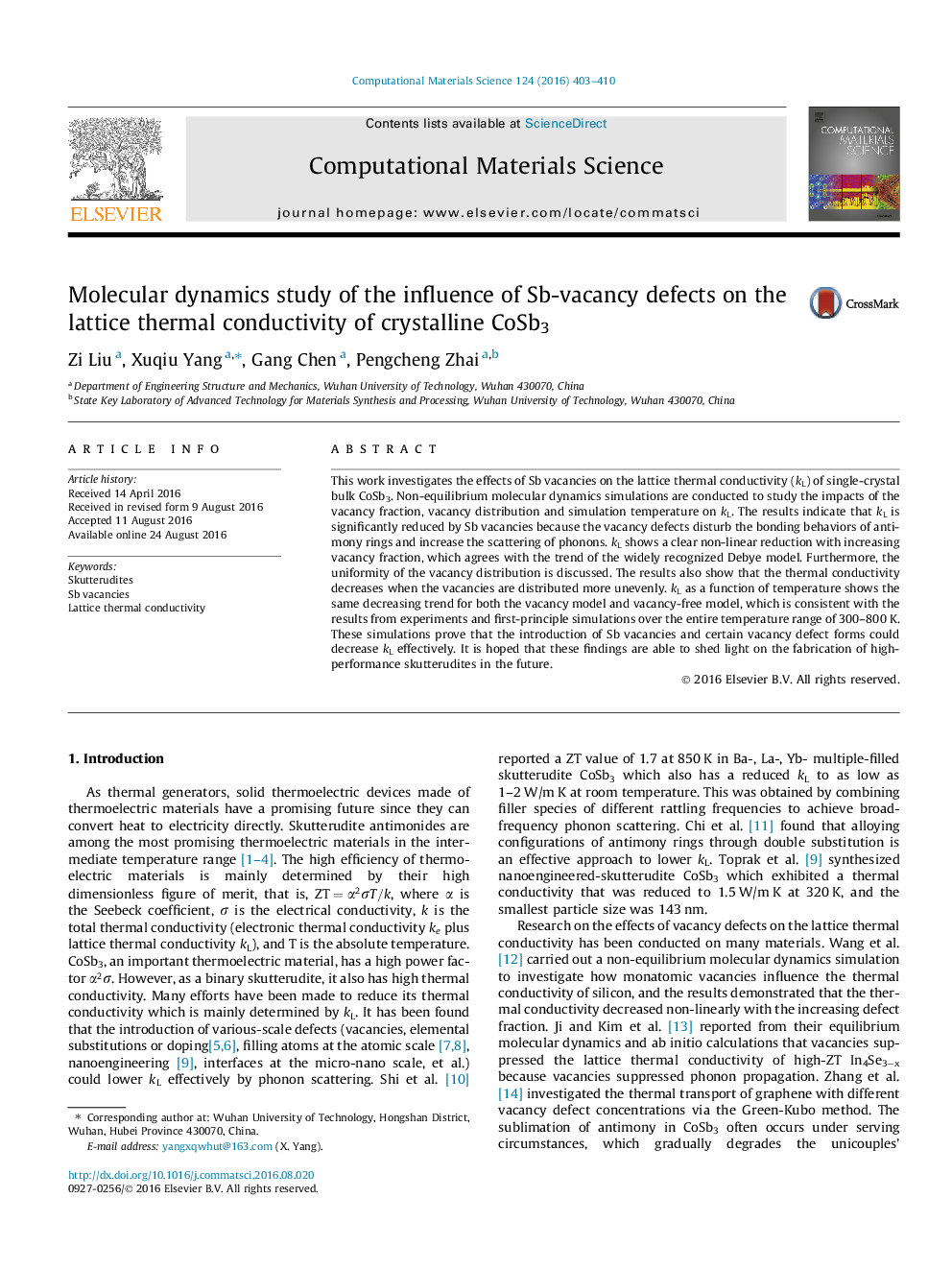| Article ID | Journal | Published Year | Pages | File Type |
|---|---|---|---|---|
| 1559809 | Computational Materials Science | 2016 | 8 Pages |
•Sb vacancy effects on lattice thermal conductivity of CoSb3 is studied.•Lattice hermal conductivity decrease with increasing vacancy fraction.•Vacancy distribution is discussed and uniform vacancies lead to higher values.•Lattice thermal conductivity decrease with increasing simulation temperature.
This work investigates the effects of Sb vacancies on the lattice thermal conductivity (kL) of single-crystal bulk CoSb3. Non-equilibrium molecular dynamics simulations are conducted to study the impacts of the vacancy fraction, vacancy distribution and simulation temperature on kL. The results indicate that kL is significantly reduced by Sb vacancies because the vacancy defects disturb the bonding behaviors of antimony rings and increase the scattering of phonons. kL shows a clear non-linear reduction with increasing vacancy fraction, which agrees with the trend of the widely recognized Debye model. Furthermore, the uniformity of the vacancy distribution is discussed. The results also show that the thermal conductivity decreases when the vacancies are distributed more unevenly. kL as a function of temperature shows the same decreasing trend for both the vacancy model and vacancy-free model, which is consistent with the results from experiments and first-principle simulations over the entire temperature range of 300–800 K. These simulations prove that the introduction of Sb vacancies and certain vacancy defect forms could decrease kL effectively. It is hoped that these findings are able to shed light on the fabrication of high-performance skutterudites in the future.
Graphical AbstractFigure optionsDownload full-size imageDownload as PowerPoint slide
